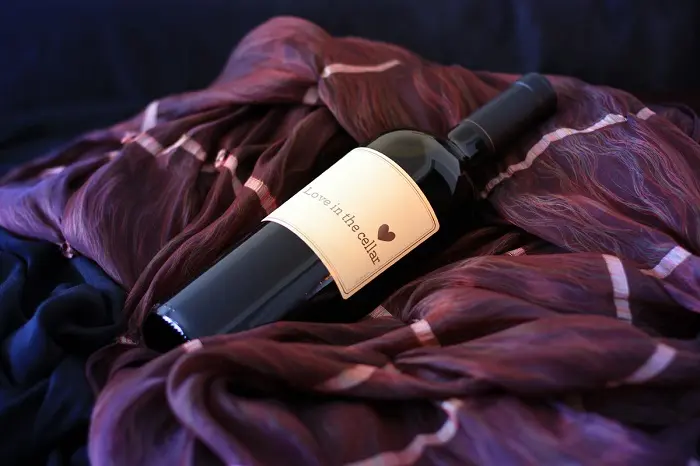Sur-lie aging is a crucial process in Champagne production, yet the methods behind it are evolving significantly. Recently, a growing number of Champagne producers have opted to replace traditional crown capsules used during secondary fermentation and aging with cork closures. Although this shift can be costly and labor-intensive, many vignerons believe the investment in cork aging is worthwhile for the quality it brings to the final product.
To explore the intricacies of this practice, we spoke with three local winemakers about the impact of aging Champagne under cork and the benefits it offers.
Benefits of Micro-Oxygenation
Juliette Alpis, winemaker at Domaine Les Monts Fournois in Ludes, has chosen to age her first batch of estate-produced Champagnes—yet to be released—under cork. This decision was influenced by her cousins at Champagne Bérèche et Fils, who have embraced cork aging for generations.
“The cork stopper allows for micro-exchanges between the oxygen in the air and the wine inside the bottle,” Alpis explains. This exchange leads to different chemical reactions during the aging process compared to bottles aged without oxygen exposure. She asserts that this interaction results in Champagnes with greater aromatic complexity and a finer mousse characterized by smaller bubbles.
Cédric Moussé, winemaker at Champagne Moussé Fils in Cuisles, concurs, emphasizing that the gas exchange during cork aging is markedly different from that of a crown cap and changes over time. “Initially, the cork is quite tender, allowing for greater gas exchange,” he notes. As time progresses, the cork hardens, providing a tighter seal than crown caps. “With crown caps, the minimal gas exchange remains constant,” he adds.
Prolonged Micro-Oxygenation
For winemakers like Alpis, who ferment their wines in barrels before bottling, aging under cork enhances oxygen exposure throughout the entire vinification and aging process. All musts at Domaine Les Monts Fournois are fermented in barrels (450L or 600L), which initiates oxygen interaction early on. “This way, the wine learns to engage with oxygen from its earliest stages,” she says, describing aging under cork as a “logical continuation” of the vinification process.
“It is important for me to maintain a linear vinification,” Alpis emphasizes, highlighting the consistency that cork aging provides. “My aim is to avoid drastic shifts in aging conditions and temperatures, as a gentle and steady environment benefits the wine.”
Added Labor and Costs
However, this extended aging process comes with increased labor and material costs. Winemaker Etienne Calsac, who runs his eponymous estate in Ludes, points out that the price of a standard Champagne bottle is already higher than that of regular wine bottles, and switching to corks incurs additional expenses.
“Using top-quality corks is essential to prevent any cork-related contamination during vinification,” he explains. Alpis adds that the risk of TCA contamination is minimal, as cork manufacturers have developed methods, such as Amorim’s NDTech screening, to detect trace amounts.
Moussé estimates that the production cost of aging under cork adds €2-3 per bottle, not including the extra labor. “Corked bottles require manual disgorging, while those sealed with crown caps can be mechanically disgorged,” Alpis explains. Mechanical disgorging can process up to 1,400 bottles per hour, compared to just 400 bottles per hour for manual methods. “While manual disgorging is time-consuming and more expensive, the qualitative benefits make it worthwhile,” Calsac states. Moussé agrees, noting that manual disgorging takes him four times longer than mechanical methods, but the personal touch enhances the experience. “There’s joy in touching each bottle and tasting the mousse from each one,” he says.
Time Savings with Cork Aging
Despite the higher labor and costs associated with cork aging, the method can ultimately save time. Calsac notes that cork aging is often reserved for vintages designed for extended aging, typically seven to eight years or more. However, he employs cork for wines with shorter aging periods, such as two to three years. “The strong oxygen exchange in the first few years helps diminish the ‘yeast’ characteristics of young wines, yielding cleaner aromas in less time,” he explains.
He shares that numerous trials have shown that his Clos des Maladries cuvée aged under crown cap for four years is no more complex than when aged for shorter periods under cork. This approach not only results in creamier, more accessible wines but also lengthens their aging potential.
Moussé finds that elevated oxygen levels during the prise de mousse phase contribute to a more complete final product, often with lower residual sugar. Alpis adds that the aromatic complexity of Champagnes aged under cork is more pronounced compared to those aged under crown caps.
“Reduction notes are less noticeable in cork-aged wines, leading to finer, delicate bubbles,” she states.
After disgorgement, new cork stoppers, or “shipping corks,” are added before market release. Alpis notes that one can identify a Champagne aged under cork upon opening, as it features a distinct square ring with pronounced ridges for secure stapling.
Ultimately, the quality and complexity achieved through cork aging are compelling. Moussé summarizes the advantages succinctly: “Champagne aged under cork is fresher, exhibits more tension, and its aging potential is exceptional!”
“Reduction notes are less noticeable in cork-aged wines, leading to finer, delicate bubbles,” she states.
After disgorgement, new cork stoppers, or “shipping corks,” are added before market release. Alpis notes that one can identify a Champagne aged under cork upon opening, as it features a distinct square ring with pronounced ridges for secure stapling.
Ultimately, the quality and complexity achieved through cork aging are compelling. Moussé summarizes the advantages succinctly: “Champagne aged under cork is fresher, exhibits more tension, and its aging potential is exceptional!”
You Might Be Interested In:


